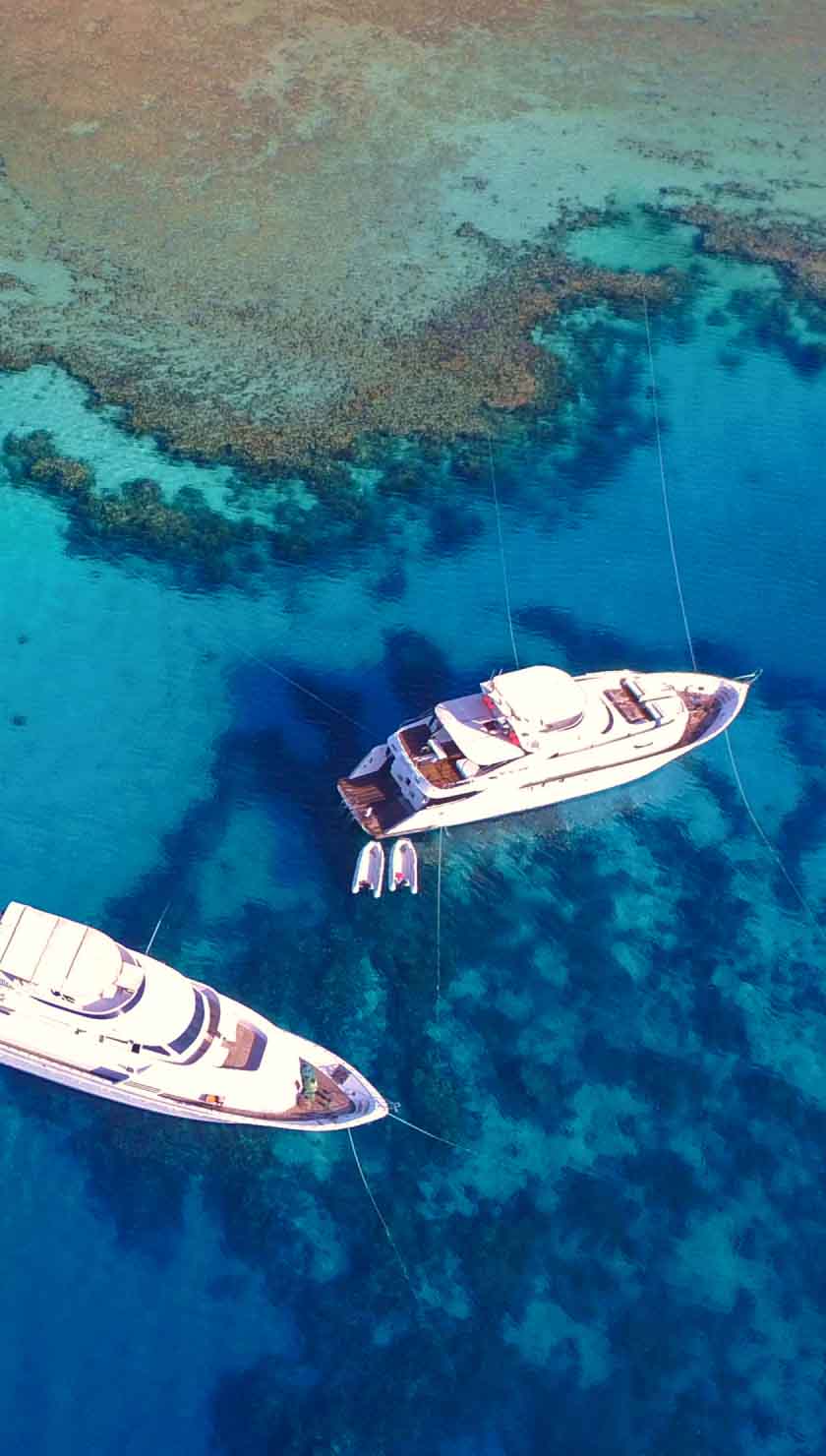Cruzeiros de Mergulho Estreito de Lembeh
O Que Esperar Em Um Liveaboard no Estreito de Lembeh
Estreito de Lembeh liveaboards levarão os mergulhadores a uma região relativamente remota no norte de Sulawesi, Indonésia. Mas a recompensa é grandiosa, já que Lembeh é reverenciada entre os mergulhadores como o santo graal da caça às pequenas criaturas. O Estreito de Lembeh é o estreito de água entre Bitung e a Ilha de Lembeh, e ganhou a reputação de ser a 'Capital do Muck Diving do mundo', e certamente faz jus a ela. Esta área criou um paraíso para fotógrafos de macro, onde algumas das espécies de peixes e corais mais elusivas e ornamentadas residem. Além disso, as areias negras encontradas na maioria dos sites de mergulho também ajudam a reduzir o brilho do fundo e criam um contraste deslumbrante contra os habitantes profundamente coloridos.
As maiores lojas próximas ficam em Bitung, ao sul. No entanto, o que falta em comodidades é mais que compensado pela qualidade dos sites de mergulho, e você não sentirá falta de nada enquanto navega em seu luxuoso liveaboard pelos sites impressionantes do Estreito de Lembeh.
O Fundo do Mar do Estreito de Lembeh
Embora seja conhecido como um trecho de água excelente para ver todas aquelas pequenas criaturas coloridas, isso não significa que as maiores não irão aparecer para você. Tubarões-baleia, a maior espécie conhecida de peixe existente, e os incrivelmente ameaçados dugongos, também são conhecidos por acompanhar os mergulhadores.
Os cruzeiros liveaboard no Estreito de Lembeh oferecem aos mergulhadores a escolha de mais de 60 sites de mergulho. Algumas das espécies mais desejadas podem ser encontradas aqui por fotógrafos e qualquer um que aprecie pequenas criaturas. Uma viagem de mergulho a bordo de um liveaboard no estreito permite que os sites mais prolíficos sejam facilmente visitados, longe do tráfego dos sites visitados diariamente. Não é incomum que espécies completamente novas sejam descobertas devido à quantidade de informações que ainda não sabemos sobre o nosso mundo submarino e o quanto ainda há a descobrir. Algumas dessas espécies procuradas incluem o cavalo-marinho pigmeu, o peixe-fantasma, camarões-louva-a-deus (um camarão tão poderoso que ferve a água ao redor de seus punhos quando ataca a presa), o mortalmente venenoso e iridescente polvo-de-anéis-azuis, e várias espécies de peixe-sapo.
O mergulho no Estreito de Lembeh pode ser feito ao longo do ano em liveaboards selecionados na Indonésia. Seu clima tropical mantém as temperaturas da água entre 25 e 29°C (77 a 84 Fahrenheit). Mesmo assim, geralmente usam-se wetsuits completos para garantir a proteção contra os corais, que podem ser muito afiados e difíceis de detectar. A maioria dos sites de mergulho de Lembeh são rasos, com menos de 8 metros (26 pés) de profundidade, e a visibilidade geralmente é muito boa, em torno de 20 metros (65 pés). No entanto, isso pode cair para até 4 metros (13 pés) após chuvas fortes. A estação chuvosa vai de novembro até fevereiro, quando chuvas substanciais podem cair por vários dias. Isso geralmente não é um problema e pouco interfere na beleza dos sites.
Sites de Mergulho no Estreito de Lembeh
Os liveaboards visitarão muitos dos sites de mergulho mais populares nesta área, mas alguns que vale a pena considerar são;
Naufrágio de Mawali é um navio cargueiro japonês da Segunda Guerra Mundial que agora está de lado a estibordo em uma profundidade de 15 a 30 metros (50 a 100 pés) de água. O navio está completamente incrustado em corais macios ao longo de seus 60 metros (200 pés) de comprimento. Crinóides balançam suavemente de um lado para o outro ao longo da lateral do navio, e árvores de corais negros estão espalhadas por todo o naufrágio, especialmente ao longo do lado de bombordo voltado para cima. O naufrágio se tornou o lar de enormes peixes-escorpião e peixe-leão, além de barramundis (robalo asiático) que nadam aqui em grandes quantidades.
Janela do Anjo oferece uma mudança de cenário, sendo um dos poucos sites no Estreito de Lembeh que não é um site de muck diving. A Janela do Anjo recebe esse nome por causa de um grande passadiço decorado, encontrado a uma profundidade de 23 metros (75 pés). As paredes da zona da caverna são forradas com corais macios muito delicados e oferecem um excelente abrigo para uma enorme variedade de espécies. Cavalos-marinhos pigmeus cor-de-rosa, polvos, peixes-morcego e nudibrânquios podem ser encontrados aqui.
Hairball é um site típico de muck diving, com encostas suaves de areia preta, troncos afundados e abundantes pontos de vida macro. Há vários peixes-sapo, brancos, negros, amarelos, gigantes e peludos. O polvo-mímico usando cascas de coco como camuflagem também pode ser visto.
Dicas Principais para Mergulhadores
A visibilidade pode cair para cerca de 4 metros (14 pés) após chuvas fortes, então torna-se ainda mais importante manter um bom contato com seu dupla durante o mergulho. Aproximadamente a distância combinada do seu braço e o braço do seu dupla é considerada a distância mais segura.
Uma lanterna de boa qualidade é uma excelente adição ao seu kit, se você ainda não tiver uma. Mesmo quando você não está fazendo mergulho noturno, uma lanterna pode ajudar a exibir as cores reais de todas as espécies que você encontrará, especialmente se a visibilidade cair.
Chegando ao Estreito de Lembeh
O Aeroporto Internacional de Manado é o aeroporto mais próximo do seu barco liveaboard no Estreito de Lembeh, a aproximadamente 1,5 horas do Porto de Bitung. Há voos internacionais diretos diários, mas muitas pessoas pegam conexões via Singapura. Uma vez em Manado, é possível pegar um táxi ou alugar um carro, embora muitos liveaboards possam organizar um serviço de traslado em seu nome.












